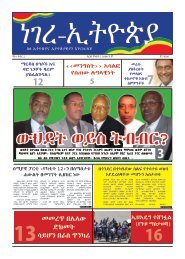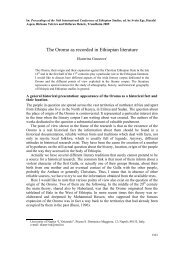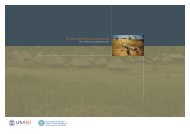MatabelelandReport
MatabelelandReport
MatabelelandReport
You also want an ePaper? Increase the reach of your titles
YUMPU automatically turns print PDFs into web optimized ePapers that Google loves.
REPORT ON THE 1980S DISTURBANCES IN MATABELELAND AND THE MIDLANDS<br />
Compiled by the Catholic Commission for Justice and Peace in Zimbabwe, March 1997<br />
PART THREE: ORGANISED VIOLENCE:<br />
THE IMPLICATIONS OF THE 1980s DISTURBANCES<br />
FOR ITS VICTIMS<br />
A.Definitions of organised violence<br />
B.Forms of organised violence.<br />
1.)Physical torture<br />
2.)Deprivation<br />
3.)Sensory overstimulation<br />
4.)Psychological torture - general<br />
5.)Psychological torture - witnessing of violence<br />
6.)Psychological torture - Disappearances<br />
C.Consequences of organised violence<br />
1.)Physical consequences<br />
2.)Psychological consequences<br />
D.Consequences of organised violence for society.<br />
E.Relevance to Matabeleland - conclusion<br />
It is difficult to estimate the costs of the epidemic violence of the 1980s. Costs must be measured in physical injuries,<br />
psychological disorders, economic damage and social pathology. Some of these costs, such as the medical consequences<br />
of physical injury, can be estimated, at the least by inference and comparison.<br />
Psychological disorder can be also be estimated, as there is already a reasonably extensive literature on the effects of<br />
organised violence. The following chapter of this report (Legal Damages), makes some attempt to indicate the economic<br />
costs of the 1980s disturbances. There are, however, very few indications that social pathology can be easily measured.<br />
As indicated in the previous chapters, the scale of violence was very large, and involved large numbers of people. The<br />
experiences reported by these people can be categorised, and it is the aim of this chapter to put the effects of the<br />
reported violence into a more human perspective.<br />
Firstly, for each type of torture, we will begin with a definition and some examples, as these are necessary, both for a<br />
clear understanding of the forensic approach involved, and for an interpretation of the reports from Matabeleland. Then<br />
we will look at a specific testimony from the 1980s disturbances illustrating the given category of torture.<br />
Once we have gone through the six main categories of torture in this way, we will make some general observations<br />
about the physical and psychological consequences of organised violence, and of the likely situation now in<br />
Matabeleland for survivors. We will not attempt to quantify any of the categories for the 1980s, as this would be<br />
inappropriate in the absence of direct clinical measurement. We will, however, comment upon the likely prevalence of<br />
disorders, since direct comparison with other local and regional samples is possible. We will conclude with some<br />
suggestions for remediation of the ill-effects. Readers must bear in mind that the case testimonies which will be outlined<br />
in this chapter are merely illustrative, not conclusive evidence for any proposition.<br />
89







